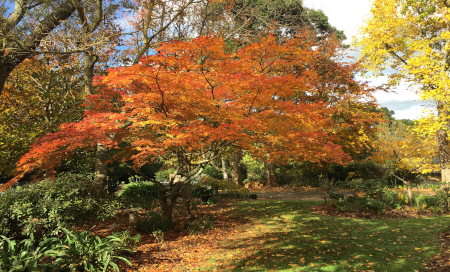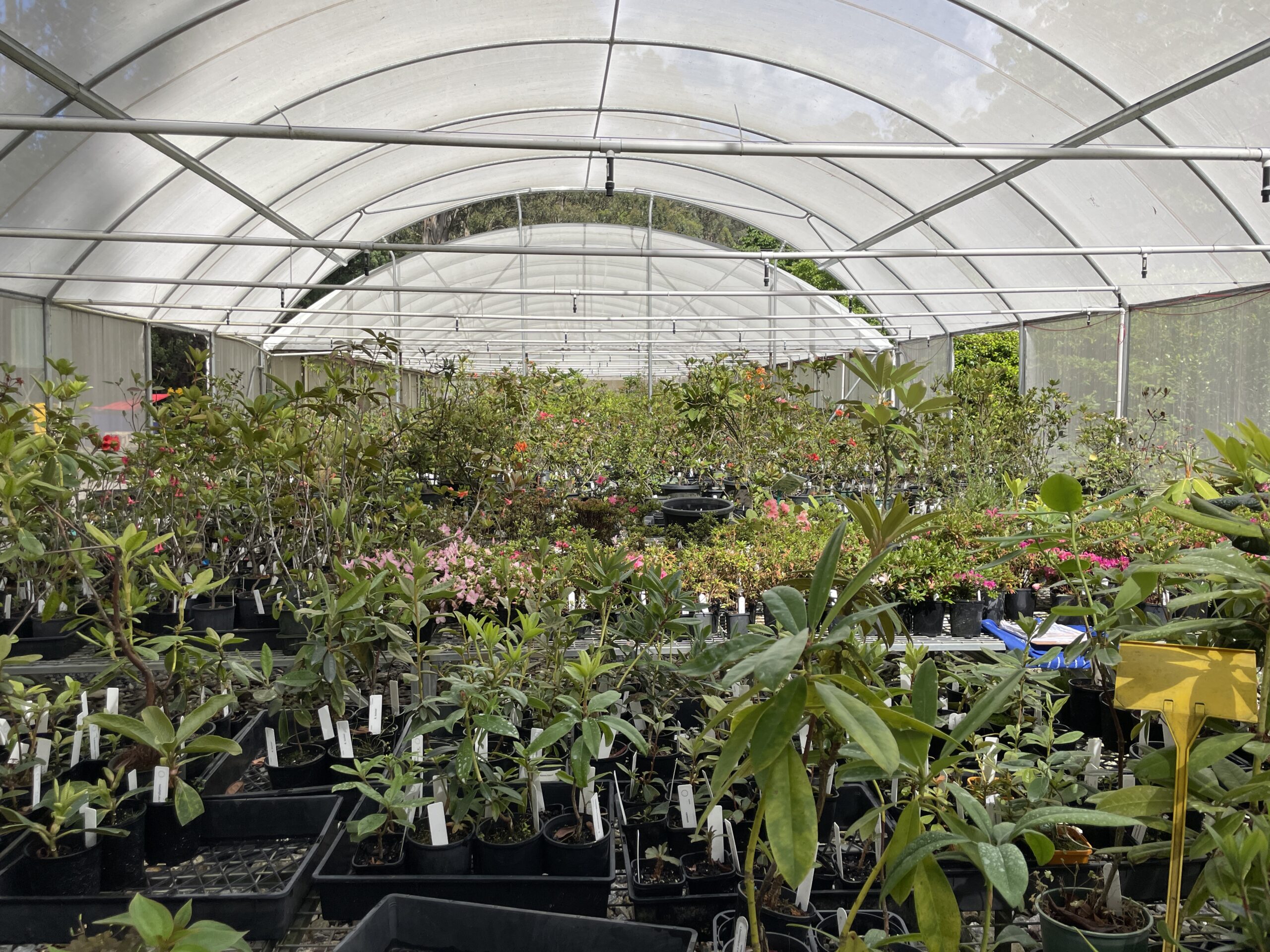Emu Valley Newsletter – June 2018
RHODODENDRON HELIOLEPSIS
Rhododendron heliolepis was first collected by the Abbe Delavay in 1886 near Hokin, western Yunnan. Other collectors located and collected material from northeast Upper Burma and southeast Tibet where it was found to be common growing amongst Abies and in rhododendron forests.
Forrest first introduced this species to western gardens in 1912. This introduction was followed by seed sent by other collectors including Kingdon-Ward, Rock and Farrer from
Sichuan, Tibet, North East Burma as well as Yunnan.
Growing in such conditions R. heliolepis was found to be a somewhat straggly shrub from 60cms to 5metres high with evergreen oblong-elliptic to ovate very aromatic leaves, both upper and lower surface covered with large yellowish scales. The campanulate shaped corolla are 5-lobed and are arranged in a four to ten flowered truss and can be rose, red, lavender-rose or lavender-purple in colour.
We grow R. heliolepis and R. heliolepis var. brevistylum and they can be seen on the topside of the middle road just before the junction with the top road.


Latest Newsletters
- Emu Valley newsletter
- ARS Victoria
- Emu Valley Newsletter
- Emu Valley Newsletter



